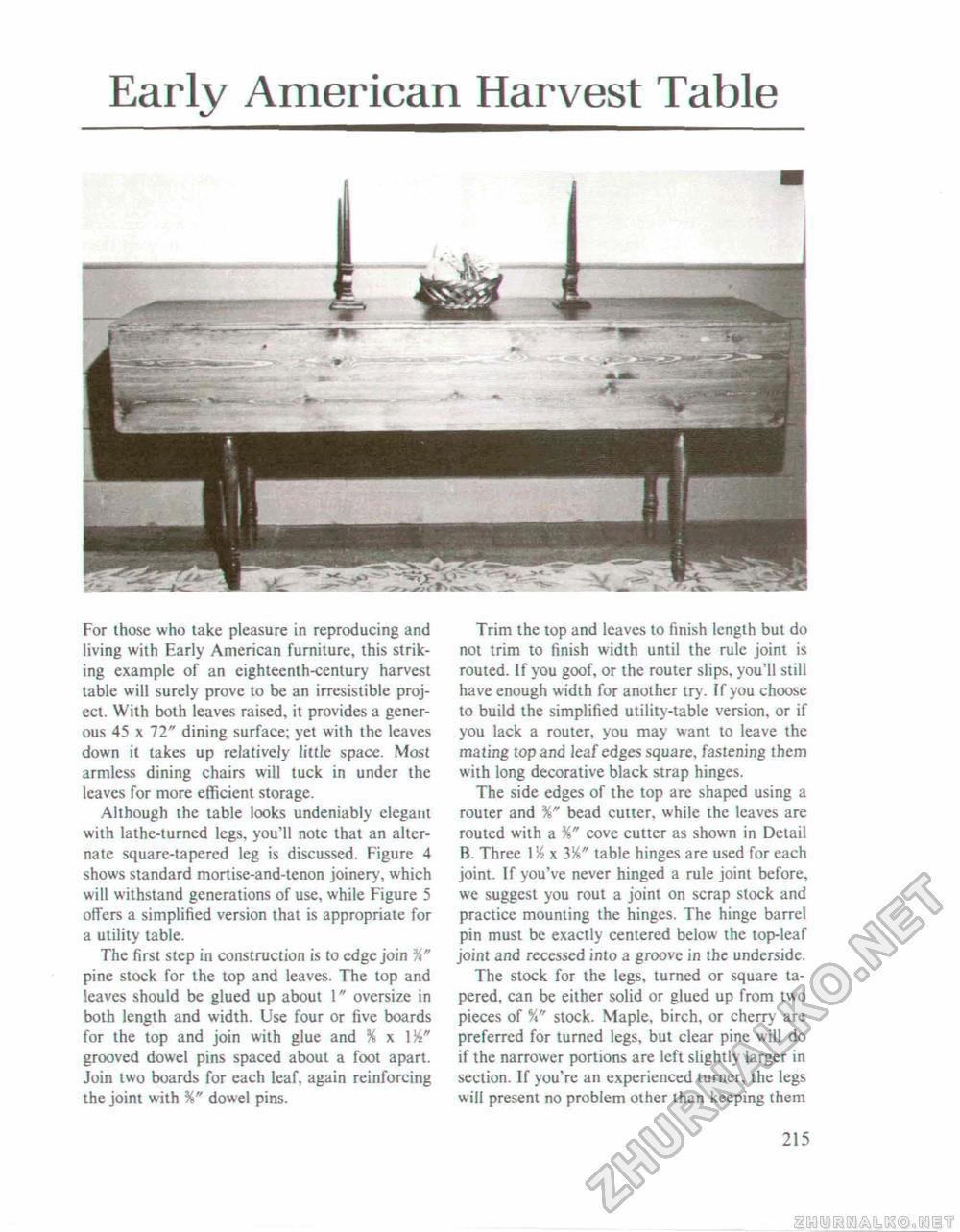Woodworker's Journal 101-Projects-for-Woodworkers, страница 222
Early American Harvest TableFor those who take pleasure in reproducing and living with Early American furniture, this striking example of an eighteenth-century harvest table will surely prove to be an irresistible project. With both leaves raised, it provides a generous 45 x 72" dining surface; yet with the leaves down it takes up relatively little space. Most armless dining chairs will tuck in under the leaves for more efficient storage. Although the table looks undeniably elegant with lathe-turned legs, you'll note that an alternate square-tapered leg is discussed. Figure 4 shows standard mortise-and-tenon joinery, which will withstand generations of use, while Figure 5 offers a simplified version that is appropriate for a utility table. The first step in construction is to edge join pine stock for the top and leaves. The top and leaves should be glued up about 1" oversize in both length and width. Use four or five boards for the top and join with glue and % x Vk" grooved dowel pins spaced about a foot apart. Join two boards for each leaf, again reinforcing the joint with %" dowel pins. Trim the top and leaves to finish length but do not trim to finish width until the rule joint is routed. If you goof, or the router slips, you'll still have enough width for another try. If you choose to build the simplified utility-table version, or if you lack a router, you may want to leave the mating top and leaf edges square, fastening them with long decorative black strap hinges. The side edges of the top are shaped using a router and %" bead cutter, while the leaves are routed with a %" cove cutter as shown in Detail B. Three IK x 3table hinges are used for each joint. If you've never hinged a rule joint before, we suggest you rout a joint on scrap slock and practice mounting the hinges. The hinge barrel pin must be exactly centered below the top-leaf joint and recessed into a groove in the underside. The stock for the legs, turned or square tapered, can be either solid or glued up from two pieces of %" stock. Maple, birch, or cherry are preferred for turned legs, but clear pine will do if the narrower portions are left slightly larger in section. If you're an experienced turner, the legs will present no problem other than keeping them 215 |








